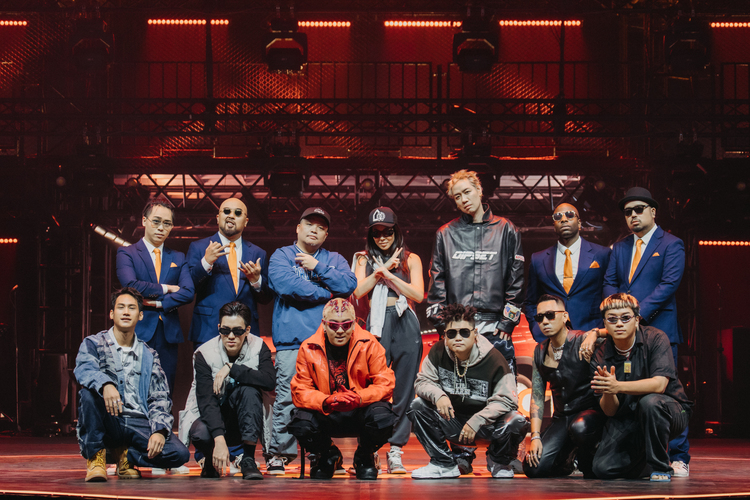Taipei Music Center (TMC) is introducing itself to local and — in time — international audiences with a permanent exhibition that takes a kaleidoscopic view of the nation’s pop music history, while simultaneously showcasing a brand-new musical institution with lofty ambitions and a watchful eye on the future.
“Music, Island, Stories: Pop Music in Taiwan” opened in September and is expected to run until at least 2026, at the Cultural Cube, one building in a mini-city of impressively sleek structures that bestride Civic Boulevard, in Nangang District. The historic neighborhood settled by Fujianese in the early 1700s became a rather drab industrial zone in the late 20th century, though it has in recent years transformed into a bright, bustling hub for technology, expos, academia — and now music.
As the name suggests, the Cultural Cube is a box-like, six-story structure that sits atop a grand, flowing stairway designed for dramatic entrances and high-profile events. The exhibition space is on three floors and audiences wend their way through what feels like colorful streets filled with musical memories.
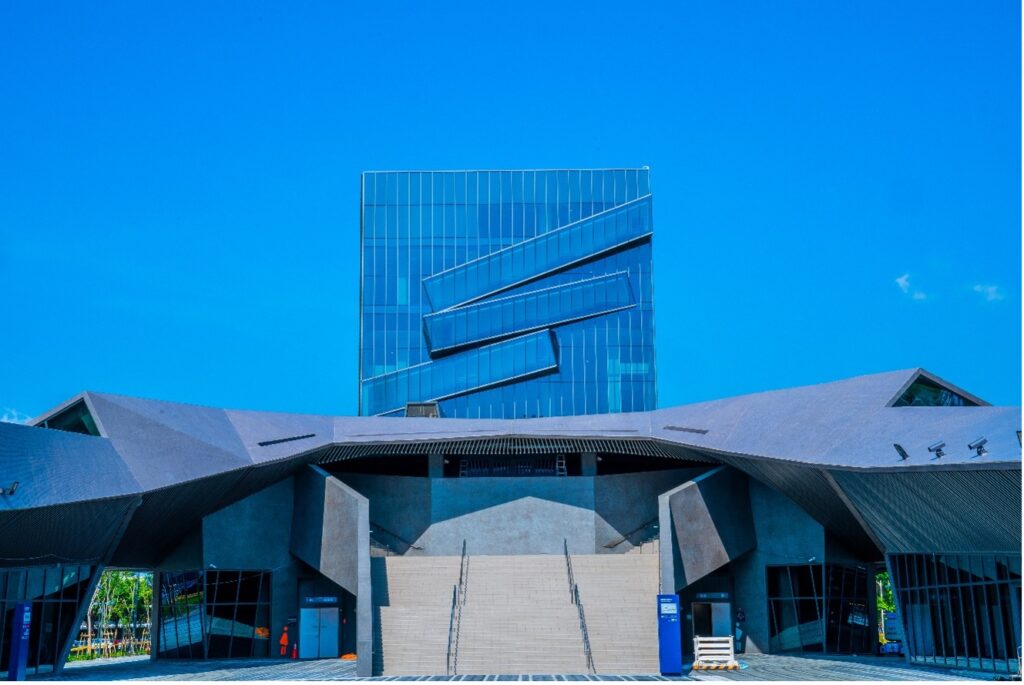
Cultural Cube. (Photo courtesy of Taipei Music Center.)
The departure point of the exhibition is the introduction of recorded music in the 1930s. It makes sense because before this time Taiwan’s native folk songs were passed on orally, hence lost to time. With electricity and the development of early tech like microphones and phonographs, music has become timeless and a matter of record, literally.
The role of technology in music is underlined by TMC CEO Lu Sheng-fei. The musician and composer of film scores such as Cape No. 7 says: “Technology is the key to driving industries forward, and music production is becoming more creative and innovative because of it. It has also substantially influenced the form of performances and exhibition displays.”
As such the exhibition cleverly mirrors technological and social change through the medium of music. For example, in the Japanese era (1895-1945) the Dadaocheng Roundabout in central Taipei was home to a nascent pop music scene. Not far distant from the tea houses and music theaters of Ximending, this was where Taiwanese after the war went to watch Shanghai-style Mandarin singing shows and singers performing at film screenings.
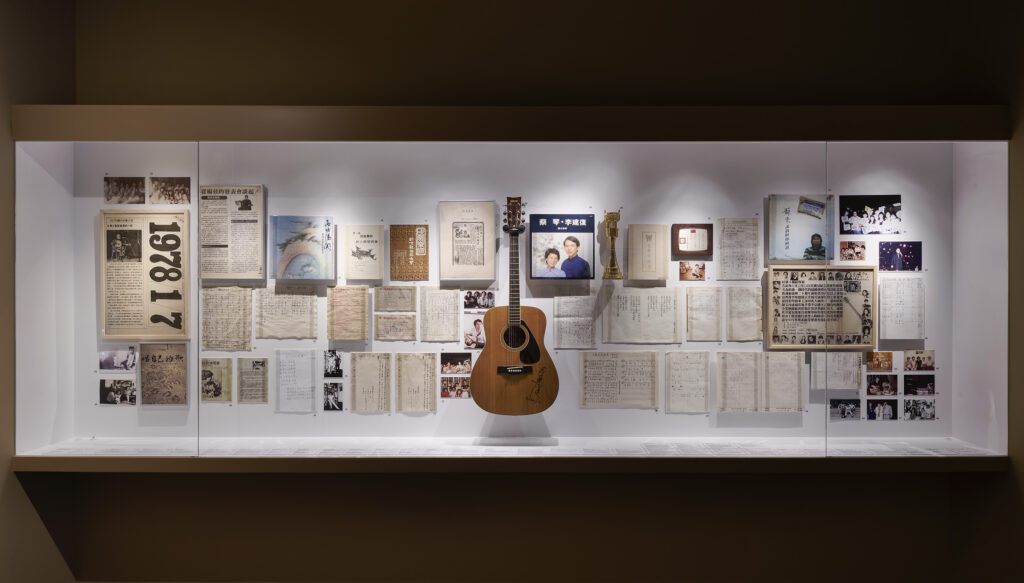
It was also where people bought their audio equipment. Here, the exhibition does a nice job of mixing nostalgia and neon lights, gramophones and sheet music, with a decent introduction to the exhibits in both Chinese and English. The history of Taiwan’s popular music leaps into the 1960s and a hippy-tinged campus folk movement, followed by a more hard-edged 1980s and music that mirrored the hard won economic and political freedoms that were emerging at the time.
This in turn led to a greater emphasis on local music, as opposed to simply copying western trends, along with the development of underground bands and the rise of a thriving independent music scene. At the same time the exhibition looks at music production and fashion – with a glam costume from Chthonic front man and legislator Freddy Lim, among other spangled items.
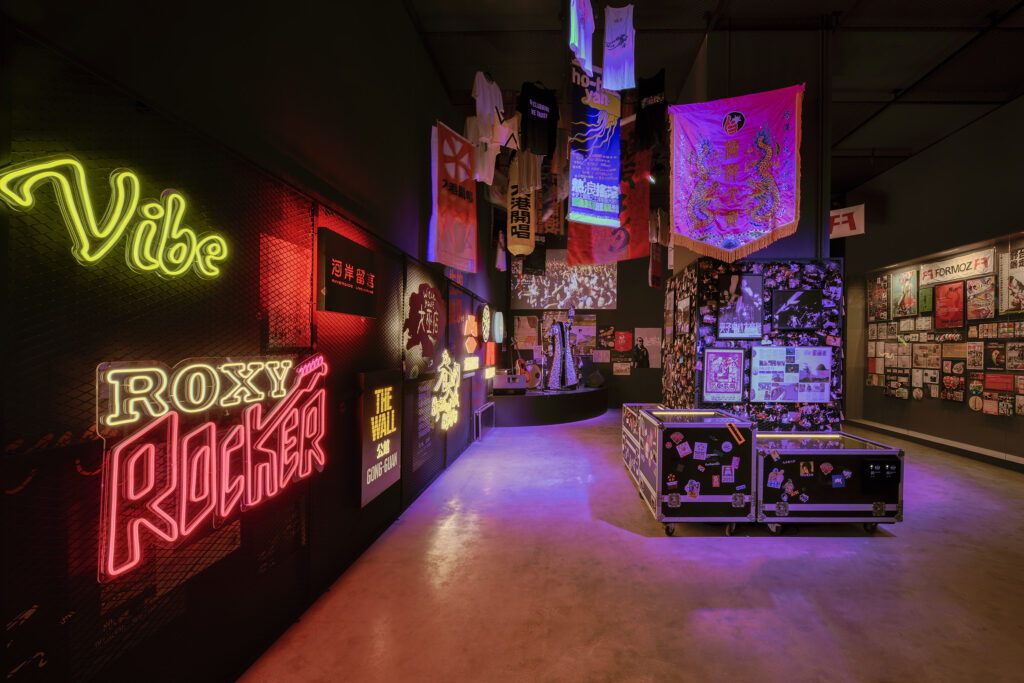
There’s a lobby wall plastered with cassette tapes, a space that recreates a train journey and the migration of singers from the countryside to the city, faux live music bars, more cool instruments than an orchestra, and a virtual concert hall that recreates gigs in all their glory but without any of the aggravations.
We also witness the inexorable spread of Mandopop, with Taiwan at its center, and today’s diverse musical environment, with its multitude of influences. It's a magical musical tour that will be appreciated by both long-time lovers of Taiwan pop, in all its manifestations, and even complete strangers to the genre.
And that’s not all. There’s another exhibition curated by the “Godfather of New Music” Ryuichi Sakamoto and fellow Japanese artist Shiro Takatani. “Is Your Time” converts seismic wave data from the Great East Japan Earthquake in 2011 into sounds. The immersive installation centers on a piano that survived the quake, and is accompanied by a striking sound and light show.
These two exhibitions see TMC up and running, looking back on history and at the same time reaching out to the future, says Lu Sheng-fei. “To put it simply, TMC hopes to be the crucial hub for music and pop culture in Asia.”
There’s no point being modest, just one look at the monumental TMC site and the attention to detail with which it has been constructed and you will appreciate this is the real deal. A Taipei City Government idea for a “pop campus” that took many years to germinate was refined in 2010 through an international architecture design competition, won by a New York firm noted for its thoughtful concepts, RUR Architecture (reiser + umemoto).
The result is an intensely Instagram-friendly building that makes a big statement. The Concert Hall is a giant, 6,000-seater, clam-shaped structure covered with an anodized aluminum skin. Known as the “Spaceship,” it has already hosted one annual prestige event, the Golden Melody Awards. An elevated walkway connects to another generously proportioned site over a four-lane highway.
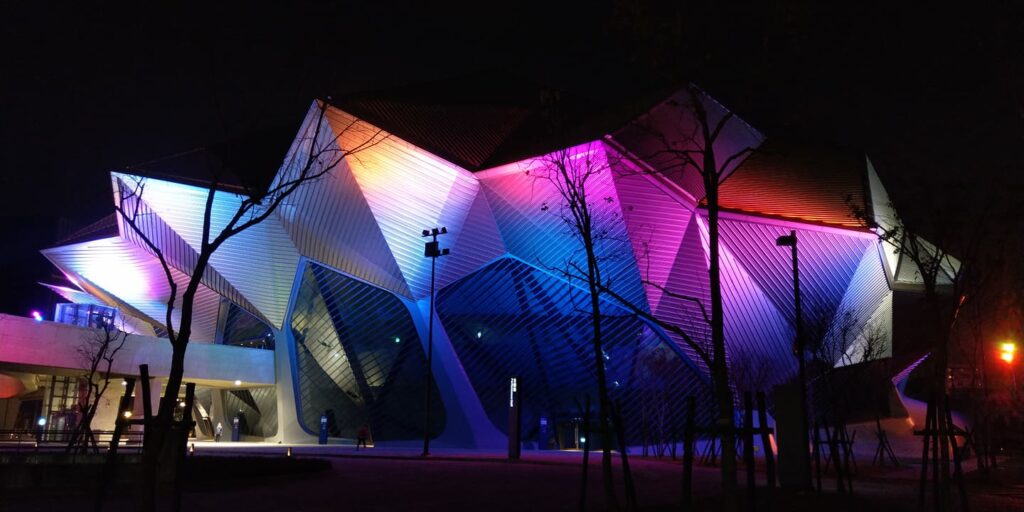
The Concert Hall.
The Creative Hub is a crystalline shell of aluminum and glass seams, where pop music communities will be birthed. It’s the creative and business end of the operation, hence the rehearsal and recording studios, suites and offices. Between the Hub and the Cube is a generous plaza, where outdoor concerts and largescale events can be held.
When the Concert Hall was opened in 2020, RUR said in a statement, "The importance of the architectural expression of the TMC cannot be overstated. Though many aspects of pop culture exist in a hyper-technological or virtual realm, there is a need for a defined physical hub dedicated to the production and reception of pop."
Thus, RUR’s Jesse Reiser calls TMC a “shrine” to Taiwan’s pop music, which he dubs “T-Pop” — no doubt a reference to K-Pop. And here’s the rub. Having boomed and delivered, Asian states are laying down markers and challenging for imaginative and cultural relevance, respect and even dominance.
It's a little simplistic, but these days everyone wants the cultural cachet that South Korea has with its music and film industries. Such prominence required considerable time and investment, building an infrastructure that incorporates both the software of minds, and the hardware of buildings and tech. This is what TMC brings to the table.
As CEO Lu puts it: “TMC is going to be the most important music cluster in Taiwan. Talented musicians will be gathered here, producing high-quality musical works. This place is also a perfect venue for gigs, broadcasting spectacular performances to music enthusiasts around the world.”
He firmly believes TMC will be the “platform to connect Taiwanese music to the international music arena. In the next decade, we aim to encourage musicians to create works with open-minds and an international vision, without language limitations. I believe once the world identifies with our free mindset, Taiwanese music will be recognized and our global visibility will be enhanced.”
As for the immediate surroundings, luxury apartments are being built nearby, there are two MRT stops and an upscale mall. Everything is in place to make TMC a destination, says Lu. “We will see outdoor music festivals or street artists in the daytime. At nighttime, visitors can enjoy various types of large-scale performances at the Concert Hall.
“Also, they can go to music bars and restaurants near TMC. The hub aims to satisfy the needs of the industry while paying attention to public expectations in terms of esthetic cultivation.”



















